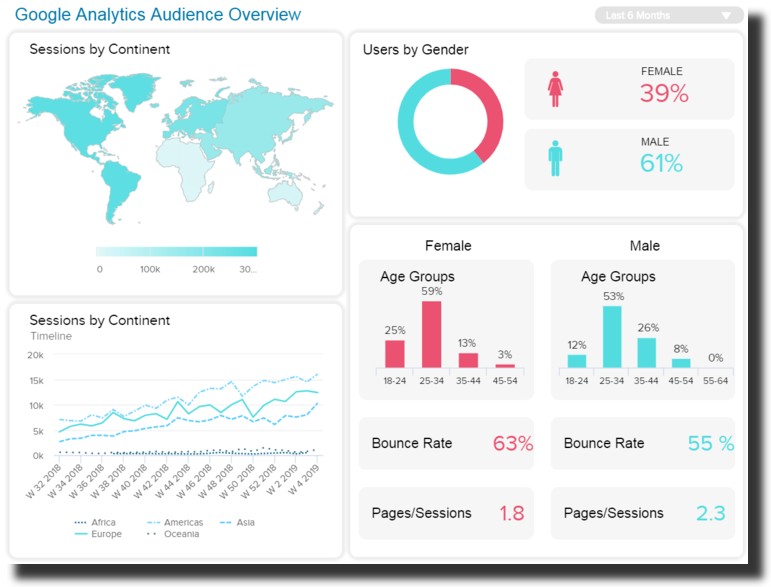Increase Efficiency and Productivity With Data Analytics
In today's data-driven landscape, businesses are significantly recognizing the crucial duty of information analytics in boosting operational effectiveness and earnings. By systematically assessing information, companies can uncover vital understandings that inform critical choices, improve processes, and dressmaker consumer experiences.
Recognizing Information Analytics
In today's data-driven landscape, understanding information analytics is necessary for organizations aiming to boost operational performance and drive success. Information analytics includes the organized computational analysis of data collections to uncover patterns, correlations, and insights that notify decision-making. By using various strategies, such as analytical analysis, artificial intelligence, and anticipating modeling, companies can change raw information right into workable knowledge.
The process normally starts with information collection, where pertinent info is gathered from multiple resources, consisting of transactional databases, customer interactions, and market trends. This data is then cleaned up and organized to make sure precision and uniformity. When the data is prepared, logical tools and software are utilized to discover and envision the info, making it possible for stakeholders to recognize fads and abnormalities.
Eventually, understanding data analytics equips companies to make educated decisions based on empirical proof instead of instinct. It promotes targeted strategies that can optimize resource appropriation, boost client contentment, and boost total performance. As businesses significantly identify the value of data-driven understandings, a solid grasp of information analytics ends up being a vital competency for teams and leaders alike, placing them for sustained success in an affordable atmosphere.

Trick Benefits for Businesses
Businesses that take advantage of information analytics can open a wide range of advantages that considerably boost their operations and productivity. Among the main advantages is improved decision-making. Data analytics gives actionable insights stemmed from real-time data, permitting businesses to make enlightened choices that line up with market needs and customer preferences.

Additionally, data analytics fosters boosted client experiences. By comprehending customer habits and preferences, companies can customize their offerings, leading to enhanced fulfillment and commitment. This personalized approach frequently results in greater conversion prices and repeat organization.
In addition, data analytics allows companies to identify emerging fads and opportunities. By staying ahead of the contour, companies can take advantage of new markets and developments before their rivals.
Applying Data-Driven Approaches
Successful application of data-driven techniques requires a thorough understanding of both business objectives and offered information sources. Organizations should initially specify their purposes clearly, making certain alignment in between information efforts and critical purposes. This clearness makes it possible for teams to focus on pertinent metrics and insights that drive decision-making.
Next, organizations ought to examine their existing information facilities. This entails evaluating data high quality, availability, and integration abilities. Premium data is crucial for precise analysis, as poor information can cause misdirected methods and squandered resources. Organizations needs to develop procedures for data collection, cleansing, and administration to keep information honesty.
Moreover, fostering a data-driven culture is important. Workers in any way levels ought to be urged to take advantage of information in their everyday operations. Training workshops and programs can enhance data literacy, equipping personnel to make enlightened choices based on analytical understandings.
Devices and Technologies Overview
A robust collection of devices and modern technologies is important look at here now for organizations intending to harness the full potential of data analytics. These devices help with the collection, handling, and visualization of data, making it possible for organizations to acquire workable insights.
At the foundational degree, information view management platforms such as SQL databases and NoSQL systems offer reliable data storage space and retrieval capabilities. For information processing and analysis, programs languages like Python and R, along with structures such as Apache Flicker, enable intricate calculations and device knowing applications.
Visualization devices, including Tableau and Power BI, transform raw data right into user-friendly graphical layouts, making understandings accessible to stakeholders in any way levels. Furthermore, cloud-based platforms like Google Cloud and AWS use scalable storage and processing remedies, suiting the expanding volumes of information organizations encounter.
For innovative analytics, anticipating modeling and AI-driven remedies are increasingly taken on, allowing firms to forecast patterns and improve decision-making procedures. Integrating these tools right into existing process is paramount; companies that efficiently take advantage of this innovation can dramatically enhance operational effectiveness and drive earnings. Therefore, buying the right tools and technologies is a tactical crucial for any kind of data-driven company.
Study of Success
Leveraging information analytics has actually led numerous organizations to achieve remarkable enhancements in performance and productivity. One significant situation is a large retail chain that applied anticipating analytics to optimize supply monitoring. By examining historic sales data and customer patterns, the firm reduced excess inventory by 30%, causing considerable cost savings and enhanced money circulation.
Another instance can be found in the manufacturing industry, where a leading automotive supplier utilized information analytics to boost its production procedures. By keeping track of maker efficiency in real-time, the organization determined inadequacies and traffic jams, causing a 20% rise in general devices efficiency (OEE) This not just boosted production prices but additionally minimized downtime and upkeep expenses.

These study highlight how data analytics can drive calculated decision-making, enhance procedures, and inevitably improve both effectiveness and earnings throughout different markets.
Verdict
In conclusion, the integration of information analytics right into service operations offers considerable possibilities for improving performance and profitability. By methodically assessing information, companies can determine ineffectiveness, enhance customer experiences, and make informed choices.
In today's data-driven landscape, understanding information analytics is important for organizations aiming to boost operational efficiency and drive productivity. Information analytics includes the systematic YOURURL.com computational evaluation of information sets to uncover patterns, relationships, and understandings that notify decision-making. Information analytics offers actionable insights derived from real-time information, allowing companies to make educated choices that align with market demands and consumer choices.
Top notch data is vital for precise evaluation, as inadequate information can lead to misguided techniques and squandered sources. Organizations should develop processes for data collection, cleansing, and management to preserve information stability.